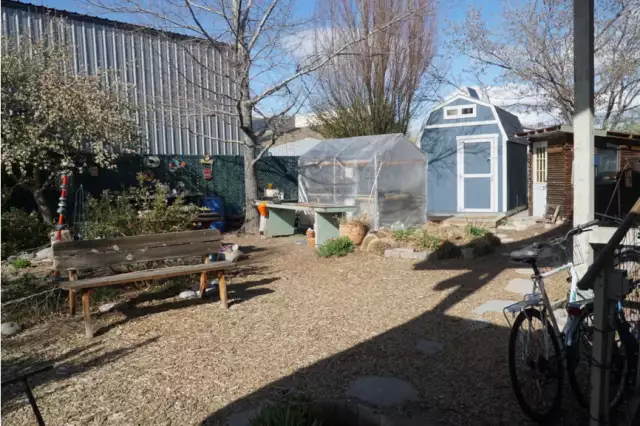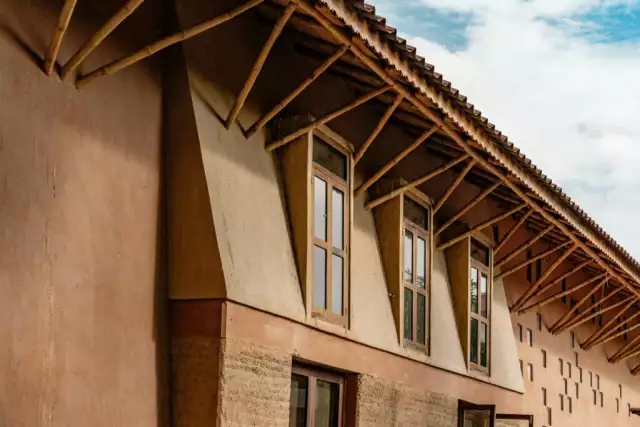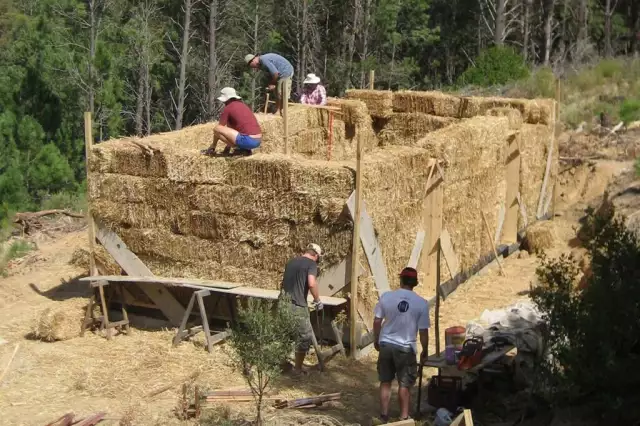Root Cellars in Newfoundland
A root cellar is an underground or partially underground structure used to preserve vegetables and protect them from frost through the winter. Root cellars are often constructed into hillsides and make use of the existing geography. Generally, they are constructed by digging a hole in the earth and reinforcing with wood, rock, cement, and/or other material before covering with sod, leaving a small door for access. Ideally, the earth surrounding the root cellar will be no less than fifty centimeters (approximately two feet) thick, which is necessary to achieve proper temperature and humidity levels suitable for preservation of the cellar’s consumable contents.
Dan Rubin says, “Root cellars are holes in the ground that use the surrounding earth to keep stored food from freezing. We found more than twenty root cellars in Pouch Cove, each one built in a unique way. But most of them are no longer in use. Without local agriculture, people no longer see them as necessary, so they are often neglected or removed.”
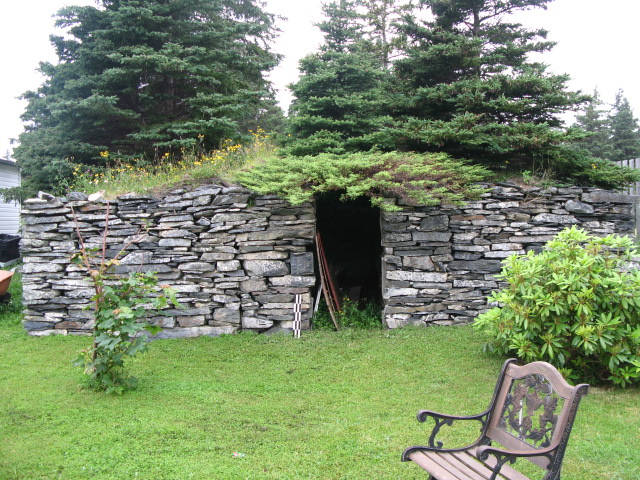 Root cellars are commonly constructed in the landscape between the fields where the crops are grown, and the house where the crops will eventually be prepared and consumed.
Root cellars are commonly constructed in the landscape between the fields where the crops are grown, and the house where the crops will eventually be prepared and consumed.
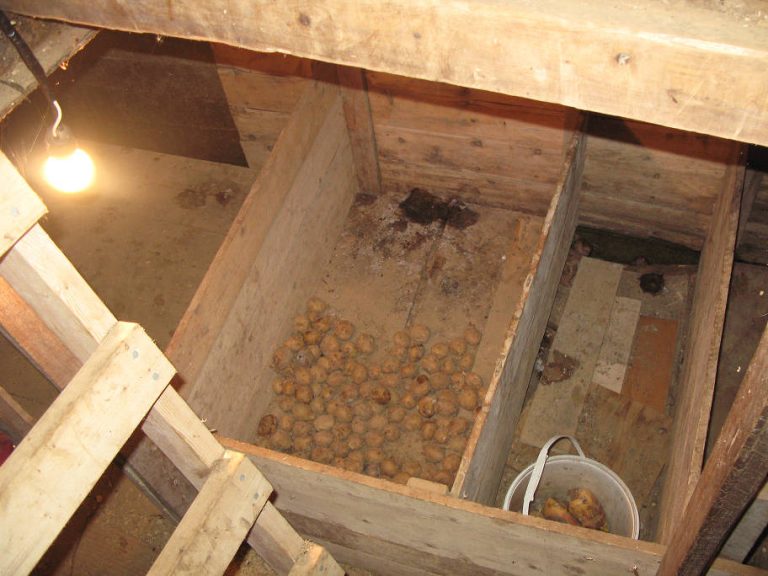 When used for the storage of vegetables, the interior of the cellar was commonly divided into wooden compartments called pounds. These were located either directly on the ground, on raised wood, or in bins, keeping separate varieties of vegetables, such as potatoes and turnip, in separate sections. Carrots and parsnips were often kept in bins or buckets filled with sand or sawdust which kept them moist and firm. Cabbage was kept up high and often described as being hung from above. During the summer months, root cellars were also used to store jams, jellies, milk, and other perishable items to keep them cool. Typically, a root cellar is accessed every week or two to bring in vegetables to the house.
When used for the storage of vegetables, the interior of the cellar was commonly divided into wooden compartments called pounds. These were located either directly on the ground, on raised wood, or in bins, keeping separate varieties of vegetables, such as potatoes and turnip, in separate sections. Carrots and parsnips were often kept in bins or buckets filled with sand or sawdust which kept them moist and firm. Cabbage was kept up high and often described as being hung from above. During the summer months, root cellars were also used to store jams, jellies, milk, and other perishable items to keep them cool. Typically, a root cellar is accessed every week or two to bring in vegetables to the house.
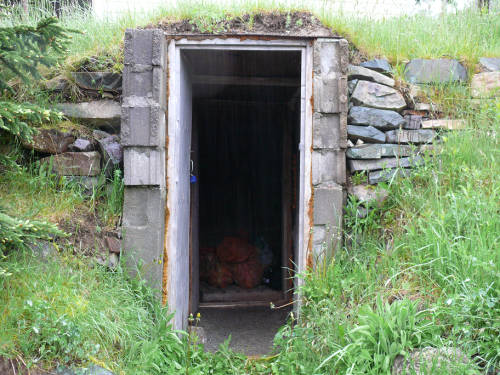 Andrew Boland says, “A root cellar is a structure, or something built, for people to preserve vegetables, produce, that is built into the ground. So, you get the coolness out of the ground and some are built all below ground, or in the hillsides. I think most commonly they were built into hillsides, or over small mounds or hills. And some of them were just one level, many of them were two levels, there was an above ground level that enabled a person to, during the winter time when there is lots of snow, to get into the cellar and get down.
Andrew Boland says, “A root cellar is a structure, or something built, for people to preserve vegetables, produce, that is built into the ground. So, you get the coolness out of the ground and some are built all below ground, or in the hillsides. I think most commonly they were built into hillsides, or over small mounds or hills. And some of them were just one level, many of them were two levels, there was an above ground level that enabled a person to, during the winter time when there is lots of snow, to get into the cellar and get down.
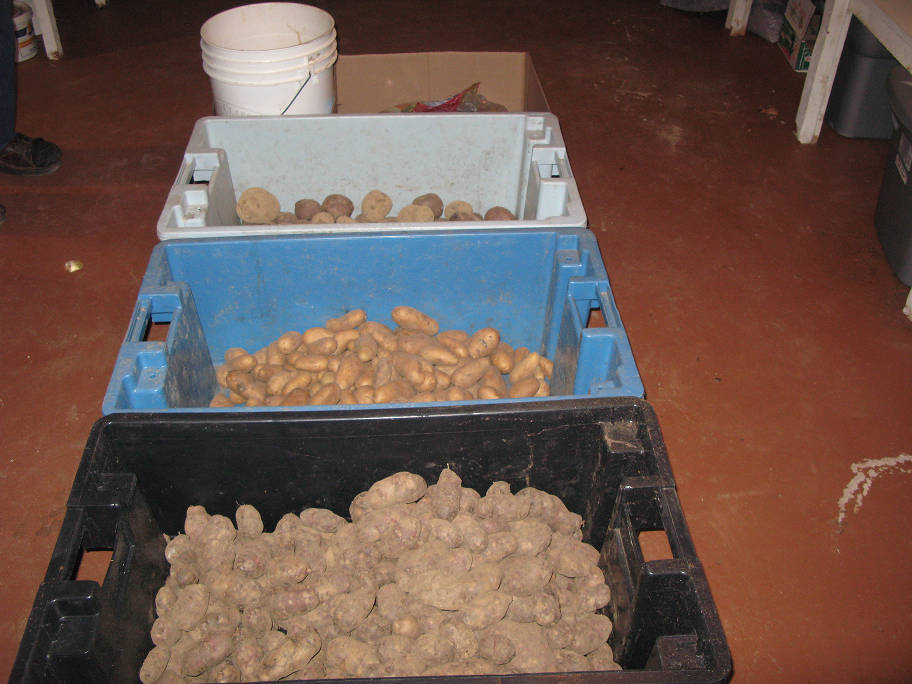 Ross Traverse says, “In Newfoundland, the root cellar is a basic structure for storing root vegetables primarily. Of course, it can be used for storing other things as well. Storing things like partridge berries which were stored in water. Originally, they might have put the barrel of partridge berries in the root cellar as well. Or bakeapples, I know they were stored in water in the root cellar. And also, it was used as a cold storage basically, a cold storage that did not freeze. In this climate, when you dug into the ground, or insulated a structure, you could then keep the temperature at proper storage temperature. Usually around five degrees centigrade or so. And it was ideal for storing potatoes. Potatoes were the main crop for storage because that was the survival food in the old days. If we’re talking about the old days, I’m talking about you know, from a time when potatoes were introduced to Newfoundland which was in the 1700s. From then on, the people that grew potatoes had to store them. That was one of the primary sources of carbohydrates. And so, you had to be able to store it. And potatoes wouldn’t keep if they froze, even if the temperature got down to close to freezing.”
Ross Traverse says, “In Newfoundland, the root cellar is a basic structure for storing root vegetables primarily. Of course, it can be used for storing other things as well. Storing things like partridge berries which were stored in water. Originally, they might have put the barrel of partridge berries in the root cellar as well. Or bakeapples, I know they were stored in water in the root cellar. And also, it was used as a cold storage basically, a cold storage that did not freeze. In this climate, when you dug into the ground, or insulated a structure, you could then keep the temperature at proper storage temperature. Usually around five degrees centigrade or so. And it was ideal for storing potatoes. Potatoes were the main crop for storage because that was the survival food in the old days. If we’re talking about the old days, I’m talking about you know, from a time when potatoes were introduced to Newfoundland which was in the 1700s. From then on, the people that grew potatoes had to store them. That was one of the primary sources of carbohydrates. And so, you had to be able to store it. And potatoes wouldn’t keep if they froze, even if the temperature got down to close to freezing.”
You can read the original article at www.communitystories.ca
Also read this blog post.


